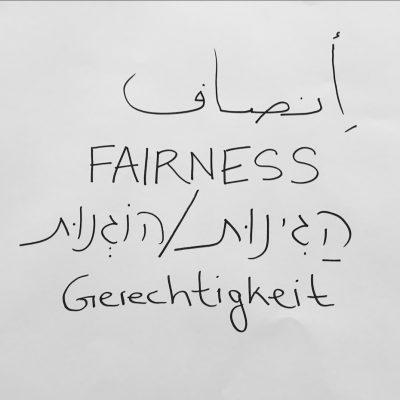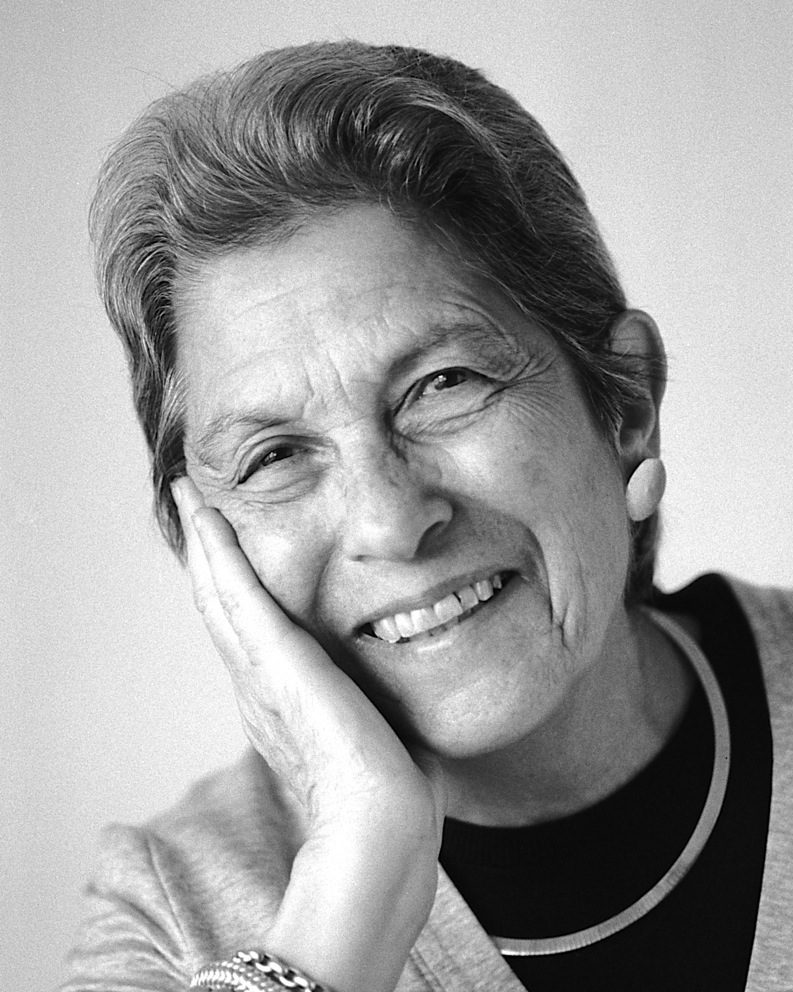Details
Contributors
Speaker
Judith Goldstein
Date
15 Février 2019
Location
Nazareth, Israel
Event
Social Cohesion Forum
Country
Article
We are delighted to be in this trilateral conference in Israel to explore some of the dynamics and forces that connect social cohesion and social coercion. This novel approach is designed to look at critical contemporary and historical issues from various international perspectives. Israel, Germany and the US are facing deeply divisive issues of national identity—and nationalism, often in its extreme incarnation—that derive from diverse populations and their leaders—issues that involve race, religion and national boundaries and histories. According to the Stanford biologist Robert Sapolsky, humans face many obstacles in achieving a balance among competing groups. He recently wrote that “…the resurgence of nationalism—that potentially most destructive form of in-group bias—requires grasping the biological and cognitive underpinnings that shape them.” He is not optimistic: “Our brains,” he writes, “distinguish between in-group members and outsiders in a fraction of a second, and they encourage us to be kind to the former but hostile to the latter. These biases are automatic and unconscious and emerge at astonishingly young ages. They are, of course, arbitrary and often fluid. Today’s ‘them’ can become tomorrow’s ‘us.’ But this is only poor consolation.” (Foreign Affairs, March/April 2019, p. 42) Given his pessimism, it is good that we didn’t invite him to this forum. If we work from our knowledge of recent history, we can look, in an overly simplistic way, at these three countries in terms of their post-World War II histories and the intersecting impact of national aspirations, traumas and tragedies of their diverse societies. The German Nazi state destroyed Jewish cultures and communities in Europe. In part as rectification for the Shoah, Israel was granted existence as a nation state with the critical support of the United States. This was in fulfilment of the national Zionist idea and not, as it is sometimes claimed, asan exercise in colonialism or racism. The US and its allies forced West Germany to become a democratic state and to accept responsibility for the Shoah. The US and West Germany became the financial patrons of the new state and supported Israel in its wars with Arab states.
As the leading opponent of totalitarian Nazi and Communist states, the US assumed the leadership of the free world—while it denied democratic rights and equity to its own African American and Native American populations. Through oppressive laws and social and economic practices, the US violated its creed of equal rights to all citizens. The US has never fully acknowledged the horrors of slavery nor genocide on its own soil—the almost complete extinction of Native American populations and continuing structural discrimination against that population. Now seven decades after the end of World War II, all three countries are immersed in the tortured and sometimes dangerous confluence of national, group and individual forms of belonging and identity. All three countries, hounded by their histories, committed themselves in theory over the past decades to renewal through liberal democratic practices. All three began the trek out of disasters to build anew: a democratic German state, a Jewish state, and an improved and integrated American democracy. All three countries subscribed to the Declaration of Human Rights and the Genocide Convention that sought to establish the sanctity of individual rights and the containment of genocidal forces. But, as Yehudah Mirsky, associate professor of Near Eastern and Judaic Studies at Brandeis University, has written, “the very ideas of human rights for individuals on the one hand, and group rights on the other can pull against one another. Who decides who is out of the group and who is in? Who decides when individuals can override a group, when they must submit to it, and how? What happens when furthering individual freedoms seems to run counter to long-held moral principles and understanding holding society together?1” In fact, lines of cohesion and coercion impinge upon societies in confounding ways. In the name of social cohesion, countervailing forces of coercion are often presented as issues of national security that have compromised the idealistic efforts to protect individual and group rights. Thus, Israel, Germany and the US increasingly enforce laws to safeguard their national borders from refugees and migrants with different national, racial and religious backgrounds. In the US and Israel, military power is employed.External borders are reinforced by equally powerful internal borders in regard to social cohesion and coercion. They relate to language, education, economic, social, health, environmental and political opportunities to enforce the interests of one group over another. These mechanisms are often identified in terms of discrimination but in the US, for example, they derived from coercion through the imposition of slavery and Jim Crow segregation laws. They separated blacks and whites, particularly in the South; served venal economic and political purposes; and strongly cemented and fixed the cohesion of the white population. With the US as a model, theGerman race laws of the 1930s were employed to make a cohesive Aryan state by isolating, punishing and eventually killing Jews.
The Israeli situation today involves Jews, Israeli Arabs, Druze and Christians and those in the occupied areas as well as the relationships among Jews from Europe and from the Middle East and Africa. The German case involves the formerly recruited so-called guests workers from Turkey and recent refugees from the Middle East who wish to remain in Germany and take on German citizenship—as well as populations from East Germany, formerly under Communist rule. In the American case, the tensions involve historic racial issues among black and white Americans(the“new” Jim Crow)as well as Native Americans, immigrants and refugees from Central and South America, the Caribbean Islands and Africa.Current tensions employ terminology—deeply complex and tension-filled—such as the “other” versus the “privileged.” In regard to the language or doctrines of differences, the historian Alan Wolfe recently disparaged the main thesis of Francis Fukuyama’s TheEnd of History and the Last Man, published in 1992. Fukuyama proposed that liberalism had finally triumphed over fascism and communism as symbolized by the fall of the Berlin wall. Wolfe, writing from our contemporary perspective states: “At a time of populist unrest, bitter polarization and rampantly spreading authoritarianism, Fukuyama’s book now appears to have been written for another planet. Far from avowing the triumph of liberal democracy, in 2019 many believe we will be lucky to hold on to the dwindling number of liberal democracies we have. And the force that may do us in appears to be….the obsessive particularism of ethnic identity.2” The historic connections among Germany, Israel and the US are not the only ones relevant to our discussion. Today, national borders do not contain or isolate the forces of domestic or internal cohesion and coercion. They spill over from country to country. Is the study of history—and the ongoing construction of a national narrative—an effort of cohesion or coercion?Germany’s ongoing educational and political campaigns to educate its citizens about the Shoah and the fight against Antisemitism finds opposition among diverse parts of its population in response to the Israeli-Arab conflict. Is that post-Shoah narrative used to placate the Americans and Israelis? Israel’s claim to speak for world Jewry, especially in regard to the Holocaust, deeply affects Diaspora Jews in a continuing debate over Jewish identity as a nation, religion and/or culture. Is that claim also employed to attract the support from Poland and Hungary in response to Israel’s fury over perceived favoritism in the European Union towards the Palestinians? In the US, attitudes towards the Israeli-Arab conflict are imbedded in the policies and attitudes of various ethnic, racial and religious groups—and the increasingly hot fires of political parties.
Multiple facets of social cohesion and coercion propel populism, nationalism and endanger the future of our liberal, pluralistic democratic countries. White Nationalists in America, supportive of and empowered by the current President, and parties of the extreme right in Germany are reviving Antisemitism and bringing it into the mainstream of globalism and social and economic disarray. Fanatical settlers in Israel use bigotry and violence in their fight for power in the name of biblically inspired cohesion. And these are far from the only examples of the rise of nationalism globally. This is a dangerous time in all three countries, and by extension, much of the world. It is our hope that through these days of discussion we will better understand the complexities of these forces that compel us to make more just and inclusive societies.
References
- Yehudah Mirsky, “The End of the World that 1948 Made,” Tablet, January 2, 2019
- Alan Wolfe,“Francis Fukuyama’s Shrinking Idea,” The New Republic,January 16, 2019, 63-64


